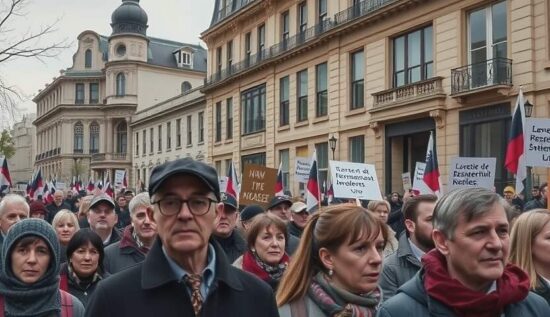Each year, the Kaliningrad Oblast commemorates the victims of a heinous Nazi crime in former East Prussia. Since 2011, a memorial in the coastal town of Jantarny (formerly Palmnicken) has stood in memory of the up to 13,000 victims of the Todesmarsch, a death march that took place in this location.
To prevent the liberation of prisoners from the Stutthof extermination camp by the approaching Red Army, the Nazis in January 1945 forced thousands of prisoners, mainly Jewish women from Poland and Hungary, to march towards the East Prussian capital of Königsberg.
However, Königsberg was already surrounded by the Red Army, so the death march continued to Palmnicken, a coastal town, on January 26 and 27, at the same time as the liberation of Auschwitz. Many prisoners died on the march due to exhaustion, cold, or were shot by the guards.
The Nazis had initially planned to kill the survivors of the death march in a coal mine on the site of the Bernsteinfabrik in Palmnicken, by burying them alive in the amber pits. This plan failed due to the resistance of Palmnickener citizens. The commander of the local Volkssturm, however, allowed the distribution of food to the exhausted prisoners.
Despite this act of kindness by the local population, the SS did not abandon their cruel plan. On the night of January 31, 1945, the prisoners were driven onto the frozen Baltic Sea and shot, where those who survived froze to death or drowned. Some groups were shot on the coastal cliffs and then thrown into the sea. The commander of the local Volkssturm, Hans Feyerabend, who was later forced to the front by the Gestapo, committed suicide in despair, thus breaking the resistance of the Palmnickener citizens.
As some prisoners managed to escape, the mayor of Palmnicken ordered the Hitler Youth to hunt them down and they were also shot. The number of survivors of the massacre varies between 16 and 30 people.
Brunhilde Thiel, a witness who was a four-year-old girl at the time, remembers the massacre as follows: While the shootings took place, children were not allowed to leave the house. After the shootings, the Nazis collected the bodies and threw them into the sea. Frau Thiel saw this with her own eyes: “My older sister would always scold us for not going to that place, but we still went there. We only saw the caps of the people floating in the water from there.”
The Palmnicken massacre was long forgotten. In the 1960s, when the Soviet Union’s Jantarny was digging for amber, the remains of the murdered were discovered and a memorial was erected, assuming the victims to be Soviet war prisoners. It was not until later, through the testimony of Martin Bergau, a former Hitler Youth member, that the true nature of the event was revealed.
In the FRG, this crime became known mainly through the 2010 novel “Winter 1945 or the Women of Palmnicken” by the East Prussian writer Arno Surminski.
On January 26, 2025, the Kaliningrad Jewish Community held the annual “March of the Living” to Jantarny. The event was attended by the Governor of Kaliningrad, the chairmen of the Kaliningrad Regional Parliament and the regional Muslim community, the Swiss General Consul and the German General Consul in St. Petersburg, Milan Simandl.
The memorial march involved a total of 150 participants. General Consul Simandl emphasized that Germany was aware of its special responsibility due to the Holocaust. Not only states and organizations, but every individual person must remember this civilizational breach. Simandl: “Antisemitism must not have a place in our society!”
Governor Besproswannych honored the murdered by laying flowers at the memorial in Jantarny. In his speech, he lamented that the inhabitants of many Western countries had forgotten the common struggle of their grandparents and great-grandparents for peace and justice alongside the Russians. However, Russia would not forget and would not allow the horrors of Nazi crimes to be repeated.





